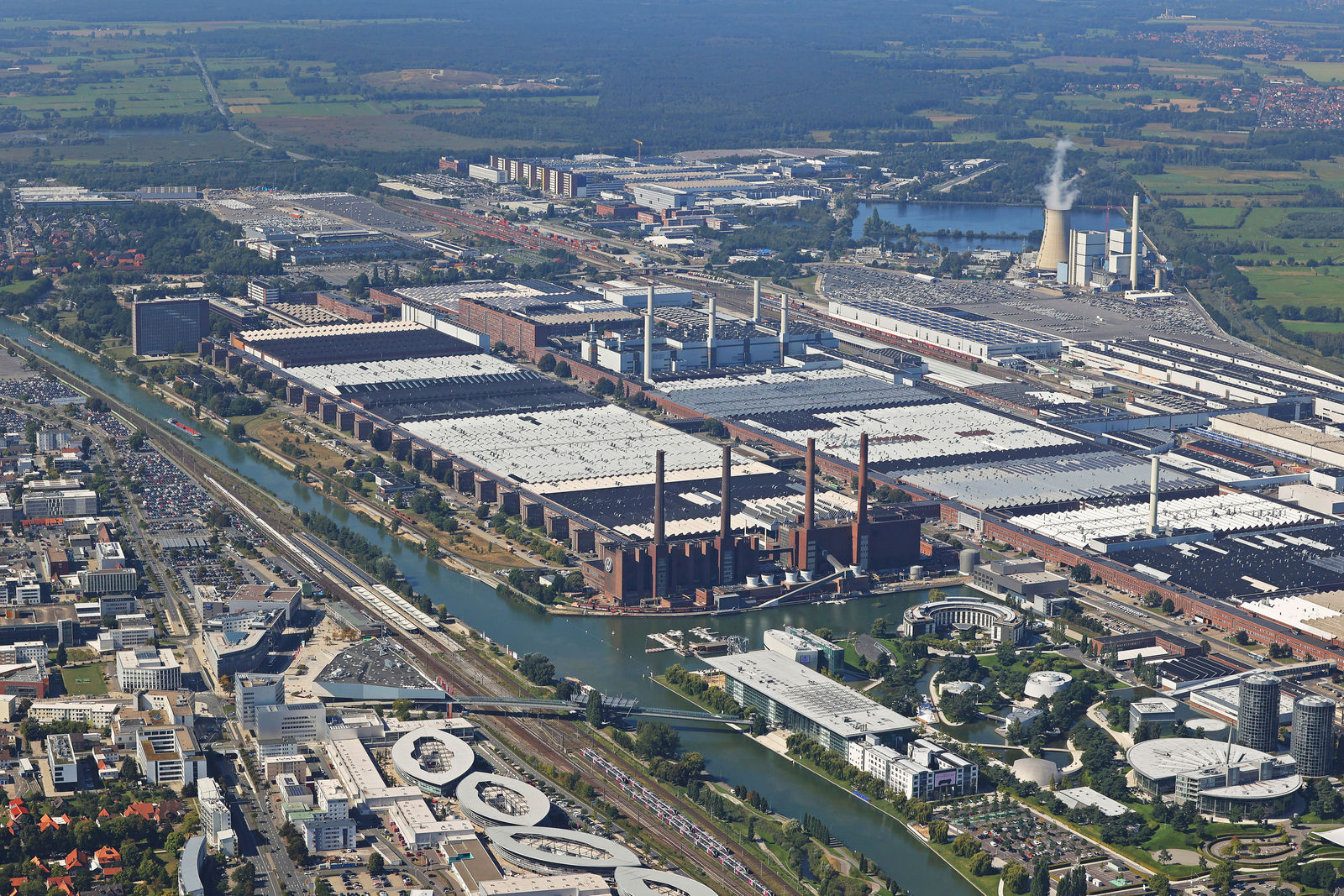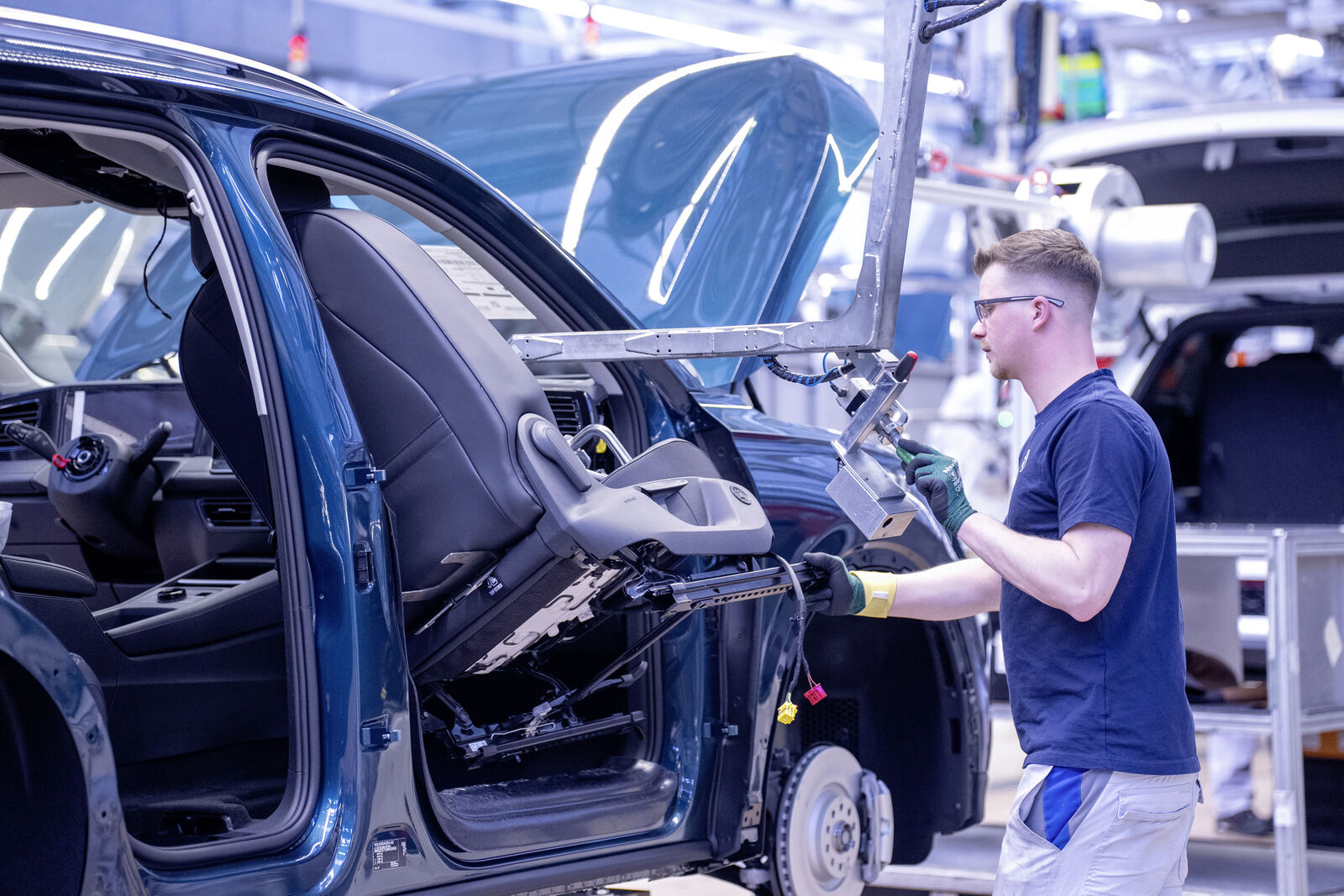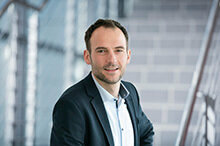Wolfsburg plant – the heart of
the VW brand
Basic press information
1. Facts and figures (March 01, 2024)
| Establishment: | 1938 |
| Area: | 6,500,000 m² |
| Yearly production 2023: | 490,000 vehicles |
| Employees: | approx. 70,000 |
| Plant manager: | Uwe Schwartz |
| Good to know: | Wolfsburg will be converted by 2030 into a multi-platform plant with the platforms MQB (internal combustion engine), MEB (electric) and SSP (autonomous driving) |
2. Current production
- Four models (incl. derivatives):
Volkswagen Golf / Golf Variant, Touran and Tiguan.
3. The world’s largest single car manufacturing complex
- The heart of the Volkswagen brand is located on the Mittelland Canal between Hannover and Magdeburg: The Wolfsburg plant is the headquarters of Volkswagen Passenger Cars and is the world’s largest single car manufacturing complex.
- The factory halls take up a surface area of 1.6 square kilometers.
- The network of roads has a total length of 75 kilometers, with an additional 60 kilometers of railway tracks.
4. Technical Development
- Technical Development (TD) at Wolfsburg represents one of the largest development centers in the automotive industry.
- 11,500 highly qualified employees shape the mobility of the future: electrification, digitalization and automated driving.
5. Commitment to sustainability / environmental protection
- Reducing the environmental impact at the Wolfsburg plant caused by production by 38.1% compared with 2010 by 2025.
- Continuous increases of energy efficiency at the headquarters of 2% per year (since 2019)
- Key measures:
35,000 MWh energy measures per year
Reduction of base load to <45 MW
Initiatives like “No Plastic”
Power plant to be equipped with high-efficiency gas turbines starting in 2024
- The two cogeneration plants operated in Wolfsburg by Volkswagen AG not only generate power and heat for the Volkswagen plant, but also heat for the city of Wolfsburg.
- In addition, together with the cogeneration plant at Kassel and the compact cogeneration plant at Brunswick, the Wolfsburg power plants supply electricity for the plants at Salzgitter, Brunswick, Emden, Hanover and Kassel.
- Volkswagen invested around 400 million euros in the fundamental modernisation two major power plants owned and operated by the company in Wolfsburg and switched from hard coal to natural gas operation.
- The high-efficiency gas turbines for the Wolfsburg power plants will reduce CO2 emissions for power and heat generation permanently by about 60% (1.5 million metric tons) per year.
- This roughly equals the amount of CO2 emitted by 870,000 cars powered by internal combustion engines during the same period.
6. History
| 1938 | Construction of the main plant in Wolfsburg for mass production of cars |
| 1945-1949 | Management of the plant by the British military government as a trustee |
| 1945 | Start of mass production of the Volkswagen Beetle |
| 1955 | Completion of the one-millionth Beetle |
| 1974 | End of Beetle production / start of mass production of the Golf |
| 1988 | 50th anniversary year of the plant and production of the 10 millionth Golf |
| 2007 | World premiere of the Tiguan |
| 2010 | Production of the 15 millionth Golf at the Wolfsburg plant |
| 2018 | Start of multi-brand production with the SEAT Tarraco |
| 2023 | World premiere of the new Tiguan |





